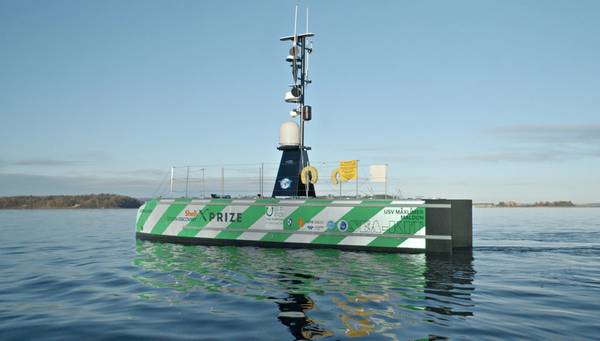
Uncrewed surface vessel specialist SEA-KIT International has announced plans to build another of its X-class, 12m USVs as a fleet vessel for launch in 2022.
This build, the sixth X-class to be constructed at the company’s Essex base, will pave the way for the company to meet increased market demand for unmanned vessels and to penetrate new sectors of the global maritime industry, the company said.
SEA-KIT CEO, Ben Simpson, commented: “Our X-class USV has changed very little since we won the Shell Ocean Discovery XPRIZE with USV ‘Maxlimer’ back in 2015. The fact that this will be the sixth build of this class is testament to its robust and now well proven design. We want to continue to push boundaries in other sectors of the maritime industry and this new addition to our fleet will enable us to demonstrate the benefits of uncrewed vessel technology to new markets.”
According to Sea-KIT, the latest build is set to be even more versatile and fuel-efficient than its predecessors, with the potential for three different
propulsion packages within one hull: diesel-electric, hybrid, and hydrogen hybrid.
SEA-KIT is currently leading a Clean Maritime Demonstration Competition funded project to demonstrate zero-emission maritime operations using a hydrogen fuel cell manufactured by Bramble Energy. The silent running and low vibration that can be achieved with hydrogen propulsion enable highly sensitive acoustic devices and sensors to monitor underwater environments more efficiently and with minimal disturbance, a huge benefit for activities such as marine mammal observation, the company said.
Ben Simpson said: “Interest in SEA-KIT’s designs is increasing now that we have vessels operating on commercial offshore projects globally and we are keen to develop new strategic partnerships to build our client base. With the launch of this vessel, we will be able to offer tailored capability demonstrations as well as charter options and additional services from next summer. It opens the door for customers to order zero-emission vessels as the industry collaboratively works towards its net-zero goals.”